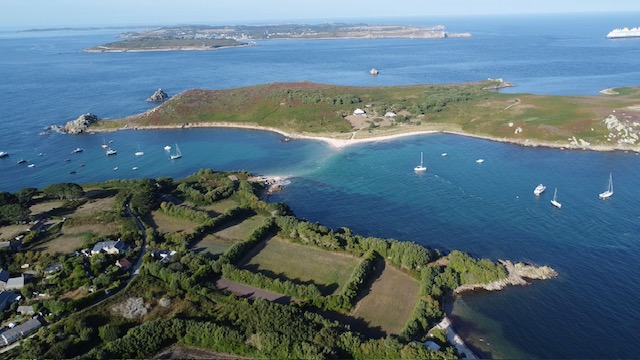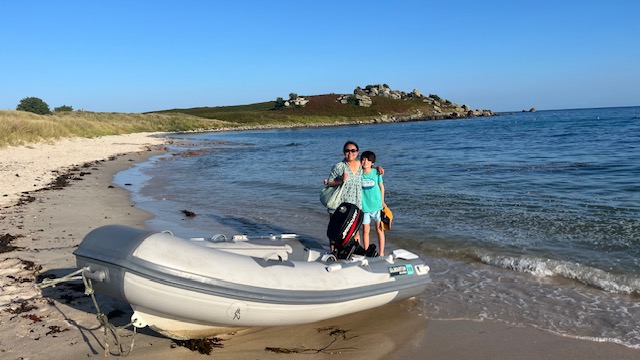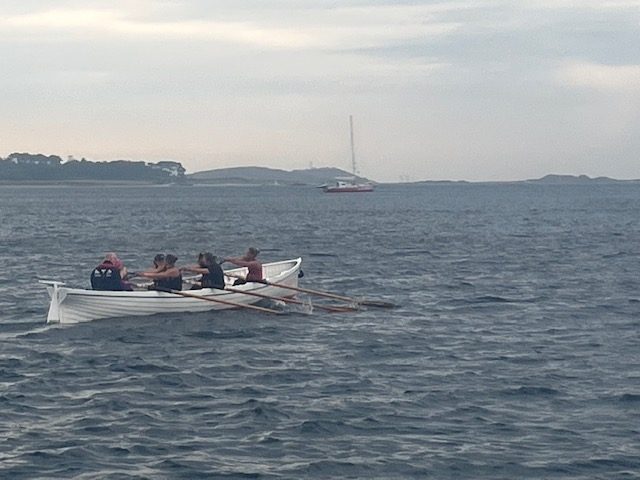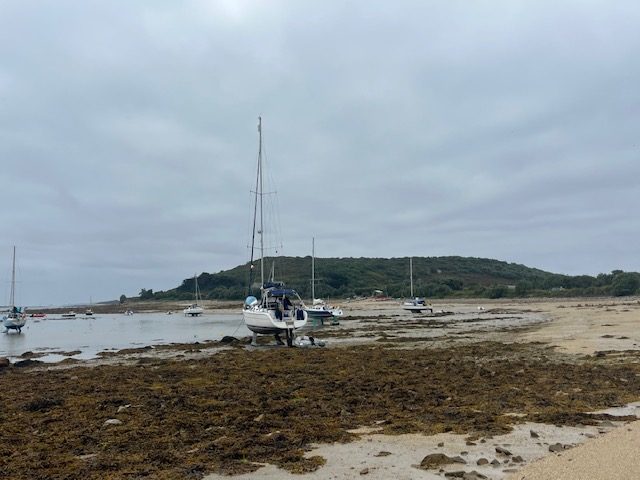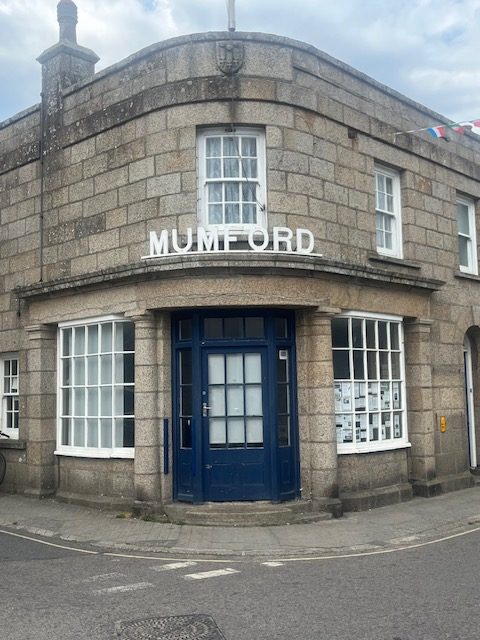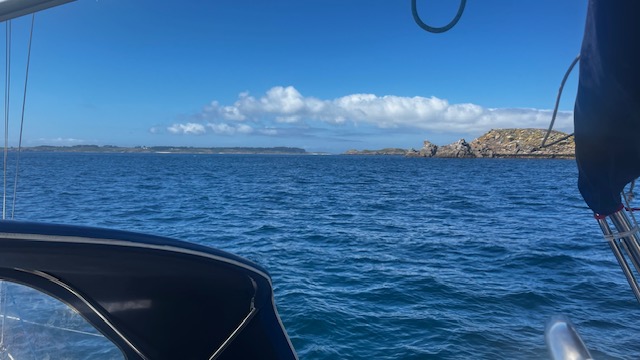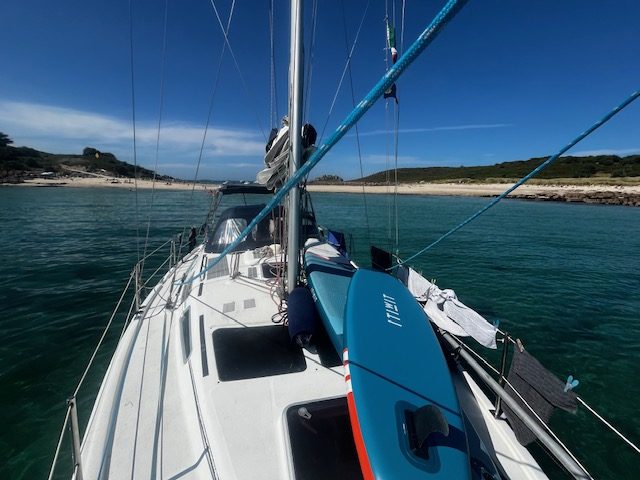Having had a restful night in St Martin’s Bay, we weighed anchor and set off south around the archipelago in glorious sunshine with a Force 3-4 easterly—finally, some proper sailing weather! With the wind on our beam and the sun sparkling off the water, we had a lovely reach past the Eastern Isles and around the southern tip of St Mary’s, taking in the stunning scenery of the scattered islands and rocks that make the Scillies so magical.
We approached the Cove anchorage at St Agnes to find it heaving with boats—clearly we weren’t the only ones who’d read the pilot book’s recommendation for this spot. The anchorage looked more like a marina without the pontoons. However, as the tide rose, we spotted our opportunity and moved into the shallower water closer to shore, making the most of our twin keels. We settled in nicely, perfectly positioned to dry out on the sand.
Once ashore, we made our way to the Turks Head, the island’s legendary pub perched right above the beach. The atmosphere was brilliant, but the kitchen was clearly under the cosh—we had to wait quite a while for our food as they were prioritizing the groups who’d made the special boat trip over from St Mary’s for dinner. Fair enough, but our stomachs were definitely grumbling by the time the food arrived. Still, it was worth the wait.
The forecast showed the wind shifting NE overnight, and I felt confident that our SE-facing anchorage would give us decent shelter. Unfortunately, that confidence proved badly misplaced. At 1 am we were jolted awake by a considerable swell that had somehow found its way into the Cove, and our keels were banging ominously on the bottom with each wave. My heart rate shot up instantly—there’s nothing quite like that sickening thud of your boat hitting the seabed repeatedly to focus the mind.
The problem became clear: with the amount of chain we’d let out for the earlier deeper water, we were now too close to the beach as the tide had dropped, and the swell was breaking uncomfortably close to us. I lay there in the dark listening to each bang, trying to calculate whether we were in real danger or just suffering an uncomfortable night. Eventually I abandoned any hope of sleep and started the engine.
The key was timing. I had to work the windlass each time the boat rose on a swell, gaining a few feet of chain with each lift, careful not to pull when we were in a trough with the full weight on the anchor. It was nerve-racking work in the dark, but gradually, surge by surge, I managed to pull her out into deeper water where the keels could float clear. The banging finally stopped, though sleep was hard to come by after that much adrenaline.
At first light we abandoned the anchorage, which was now half empty—clearly lots of other boats had also decided to cut their losses during the night. The swell outside the bay was really bad, and as we approached St Mary’s Sound the conditions deteriorated further. The wind-against-tide created dangerous breaking waves, and for a moment there was a not insignificant fear of ending up side-on to a large breaking wave. I really had to gun the engine to punch through safely, my knuckles white on the wheel, but thankfully we made it through and into the relative calm of Hugh Town.
With a forecast blow coming that evening—30-40 knots SE—we’d hoped to grab one of the public moorings at Hugh Town, but every buoy was taken. We ended up dropping anchor just northwest of the harbour, which was in the lee of the island and should give us decent shelter from the forecast winds. After the previous night’s drama, we weren’t taking any chances with our ground tackle.
We went ashore to sort out the essentials—fuel and water were available at the Harbour Master’s office—then treated ourselves to a proper shopping trip and a long walk around St Mary’s to stretch our legs and decompress from the morning’s excitement. After a bite to eat at The Atlantic, its walls decorated with evocative pictures of ships wrecked around Scilly (a sobering reminder of these waters’ reputation), we headed back to Sipadan. The evening was beautiful, with gig crews rowing nearby against the backdrop of a stunning sunset—the Scillies at their best.
Despite the strong wind that built through the night, we had an unexpectedly peaceful sleep. The anchorage was perfectly sheltered, and after the previous night’s ordeal, the steady pull of the anchor rode and the gentle heel of the boat felt positively luxurious. The next morning we were up at 5am to catch the high tide for crossing Tresco Flats to Bryher—timing is everything in these shallow waters. We entered Green Bay from the southeast, finding a spot close to shore that looked promising. However, after we’d dried out we discovered our first attempt had been over rocks and an uneven seabed—not ideal. We lifted the anchor and moved further south and inshore, feeling more confident.
That confidence evaporated when the tide dropped and we could see our actual situation. We’d been incredibly lucky—our rudder was sitting between two rocks, and the same with our keels. One slightly different angle and we could have done some serious damage. It was clear we’d have to move further out and south again on the next tide. Still, Green Bay was spectacular, with crystal clear water and very well sheltered. If we could just find a decent patch of sand, it would be perfect
